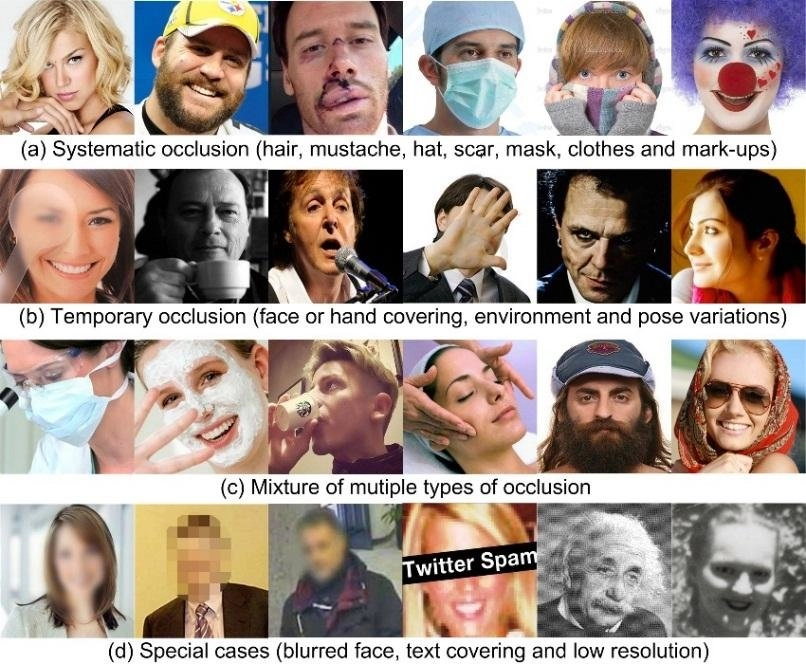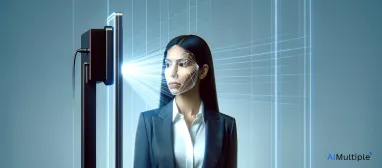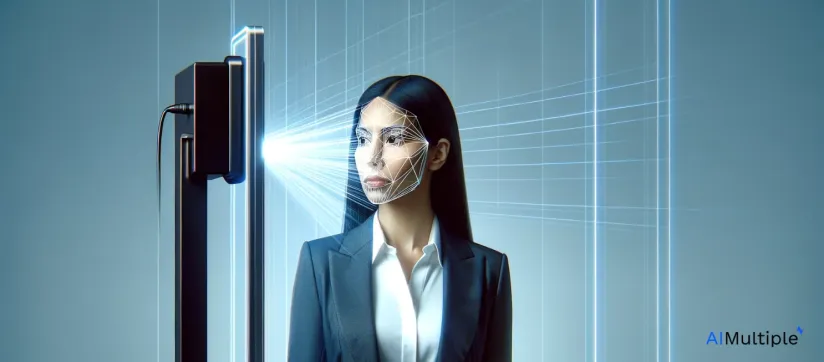From unlocking your smartphone to catching fugitives, facial recognition technology (FRT) is everywhere. Forecasts suggest that this growth in facial recognition usage and development will only rise in the future.
While many businesses successfully leverage the technology, they probably went through various hurdles to develop or implement it.
In this article, we aim to identify the top challenges faced by facial recognition developers and implementers and explain how they can overcome them. The challenges we will discuss in this article lie under 4 main categories:
- Accuracy
- Security
- Ethics
- Deployment
The challenge of accuracy
Achieving strong accuracy is one of the major challenges in developing FRT. For instance, the face being presented to the system can have:
- Light variations,
- Misalignment in the face or variation in poses,
- Some type of occlusion etc.

For instance, in a situation like a global pandemic or at the laboratory where fave masks should be worn constantly, FRT can be difficult to implement.
How to overcome facial recognition’s accuracy challenges?
While there is no way yet of eliminating these challenges and achieving 100% accuracy in facial recognition, there are ways to improve current models:
- Research has proven deep learning deployed with large and diverse datasets to be an effective way to improve facial recognition accuracy and overcome challenges such as illumination variance and variance in facial expressions. Deep learning does this by extracting unique facial components from face images and using a trained model to identify photos from a large database.
- 3D imaging is also an effective way of getting more accurate facial recognition results. However, it requires the application of expensive sensors and 3D imaging cameras.
- Another way of overcoming such challenges is to expand your dataset and incorporate images with variations.
If you wish to find an image data collection service, click here.
The challenge of ethics
FRT has been around for a while; however, it has only recently been subject to serious scrutiny. This is mainly due to the ethical considerations that users and developers of the technology are suddenly realizing. The skepticism is mainly due to inefficiencies and biases in facial recognition models.
Watch this ted talk about how facial recognition can be biased.
Especially in the law enforcement field, FRT is considered very controversial. Many cases of wrongful imprisonment could be attributed to inaccurate and faulty facial recognition systems. This is why many companies have stopped using FRT, and others hesitate to implement it.
For example, after the George Floyd case, IBM stopped offering facial recognition software for mass surveillance or racial profiling to law enforcement agencies. Following IBM’s announcement, Amazon also implemented a one-year moratorium for the police to use FRT. Similarly, Microsoft also prohibited the police from using their facial recognition tech until new government regulations and policies were enacted.
How to overcome facial recognition’s ethical challenges?
A recent Stanford report highlights some recommendations developers and implementers can consider to overcome the accuracy challenges:
- All dataset (Public/private) lists should be up-to-date and disclosed while deploying the FRT
- Users should test the third-party facial recognition system with their own data, and vendors should facilitate that.
- Changes to third-party software that may impact performance must be properly documented by both the vendor and the user.
- Users should consider domain-specific regulations for using FRT
Besides that, improving the AI-powered facial recognition system’s training process can also help avoid ethical issues.
Click here to learn more about how to train AI properly.
The challenge of security
This brings us to another significant challenge – security. Using FRT poses a significant security threat to its users because it uses biometric data (facial images), which can be easily exploited for identity theft and other malicious purposes.
For instance, researchers were able to hack into Apple’s face-ID within 120 seconds at the annual Black Hat hacker convention in Las Vegas.
Watch the video to see how secure facial recognition systems in smartphones can be:
How to overcome facial recognition’s security challenges?
Even though these are bulletproof, the following methods can increase the security of FRT:
- Consider the security of the machine learning and deep learning algorithms used in the system.
- White-box or black-box AI security assessments can also be conducted to improve security. Click here to learn more about different ways of web application security testing.
- Leverage the cloud for data storage. This is mainly because data in the cloud is encrypted and is stored in multiple places in case of hardware breaks making it more secure. Cloud vendors are also continuously working with cybersecurity specialists to strengthen their company’s security.
Click here to learn more about cybersecurity practices.
The challenge of deployment
The cost and difficulty of deploying FRT vary with the type of system and the business use case in question. A simple facial recognition system for office attendance might not be that hard to develop or implement.
However, If the system is required to do much more, such as be:
- Accurate enough to work with different image variations
- Unbiassed to genders and races
- Detect people through masks and other occlusions
- Difficult to exploit by criminals
- Able to analyze 3D imaging
Then its costs, difficulty of development, and deployment will change accordingly.
All these requirements can make the facial recognition model complex, difficult, and more expensive to train and implement. Therefore, the costs can become a big barrier to the adoption of facial recognition technology.
How to overcome facial recognition’s deployment challenges?
Planning is a crucial part of developing and implementing any technology in your business. Depending on whether you’re opting for an in-house or outsourced development model, there are different costs to be taken into account.
In case of in-house development:
For an in-house development of FRT, a business should be aware of:
- Talent costs
- Data collection costs
- Training costs
- Other development costs
In case of outsourcing:
For an outsourced development of FRT, a business should be aware of:
- Vendor costs
- License costs
- Hardware costs
- Maintenance costs
It can also be beneficial to consider the integration of the FRT in the business if the current infrastructure can support the solutions. If there is enough digital dexterity to operate and maintain the FRT.



Comments
Your email address will not be published. All fields are required.